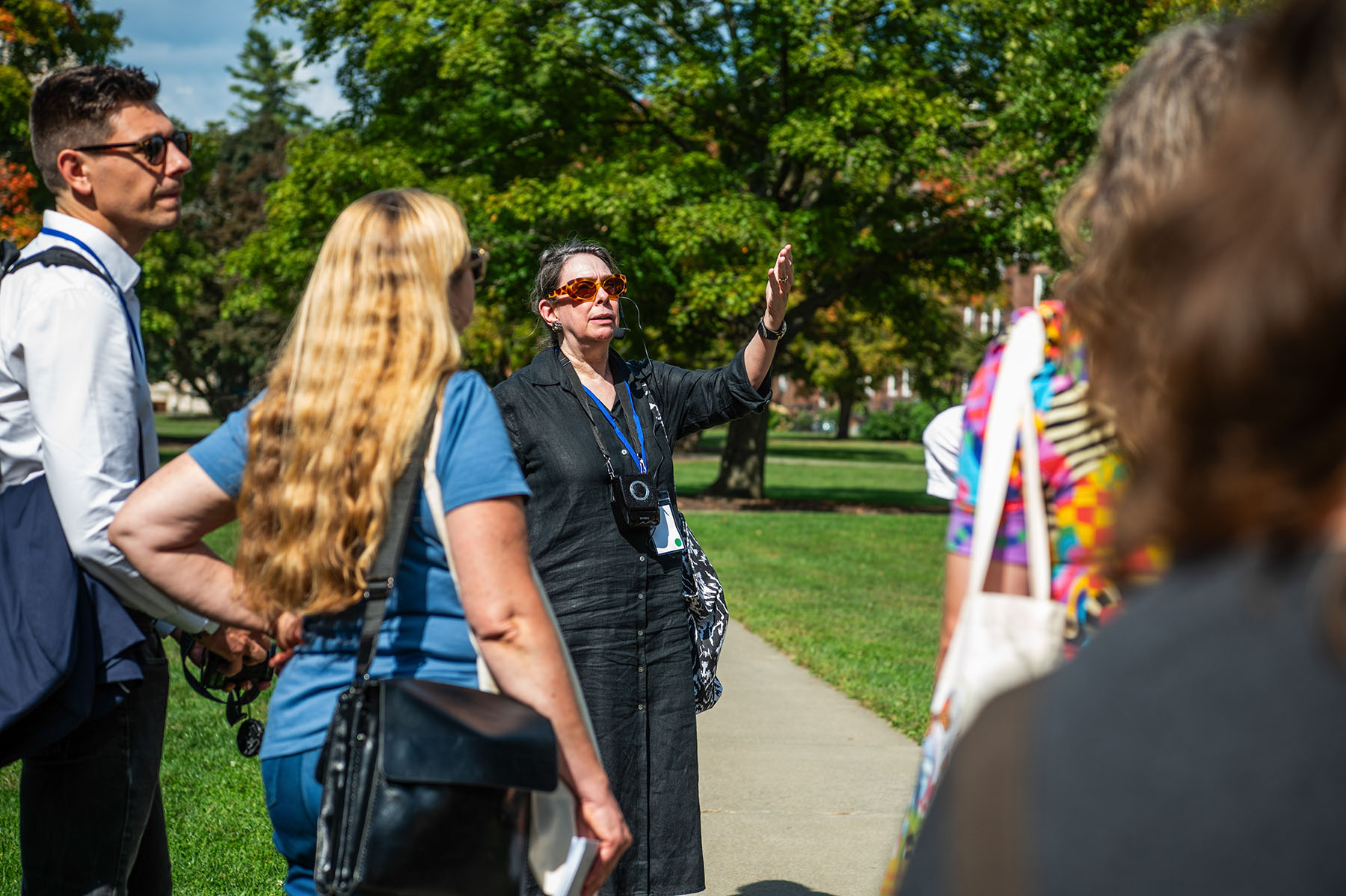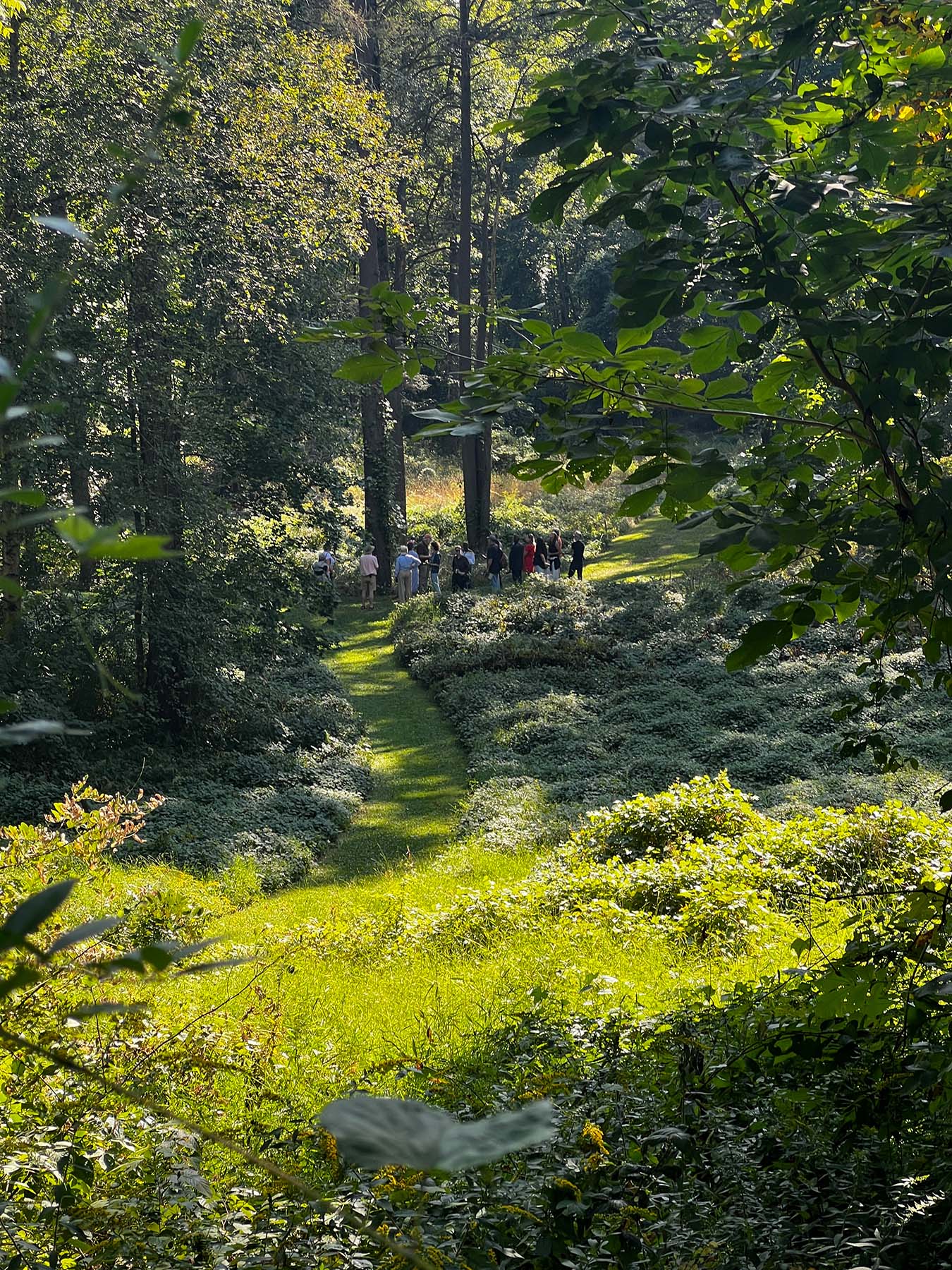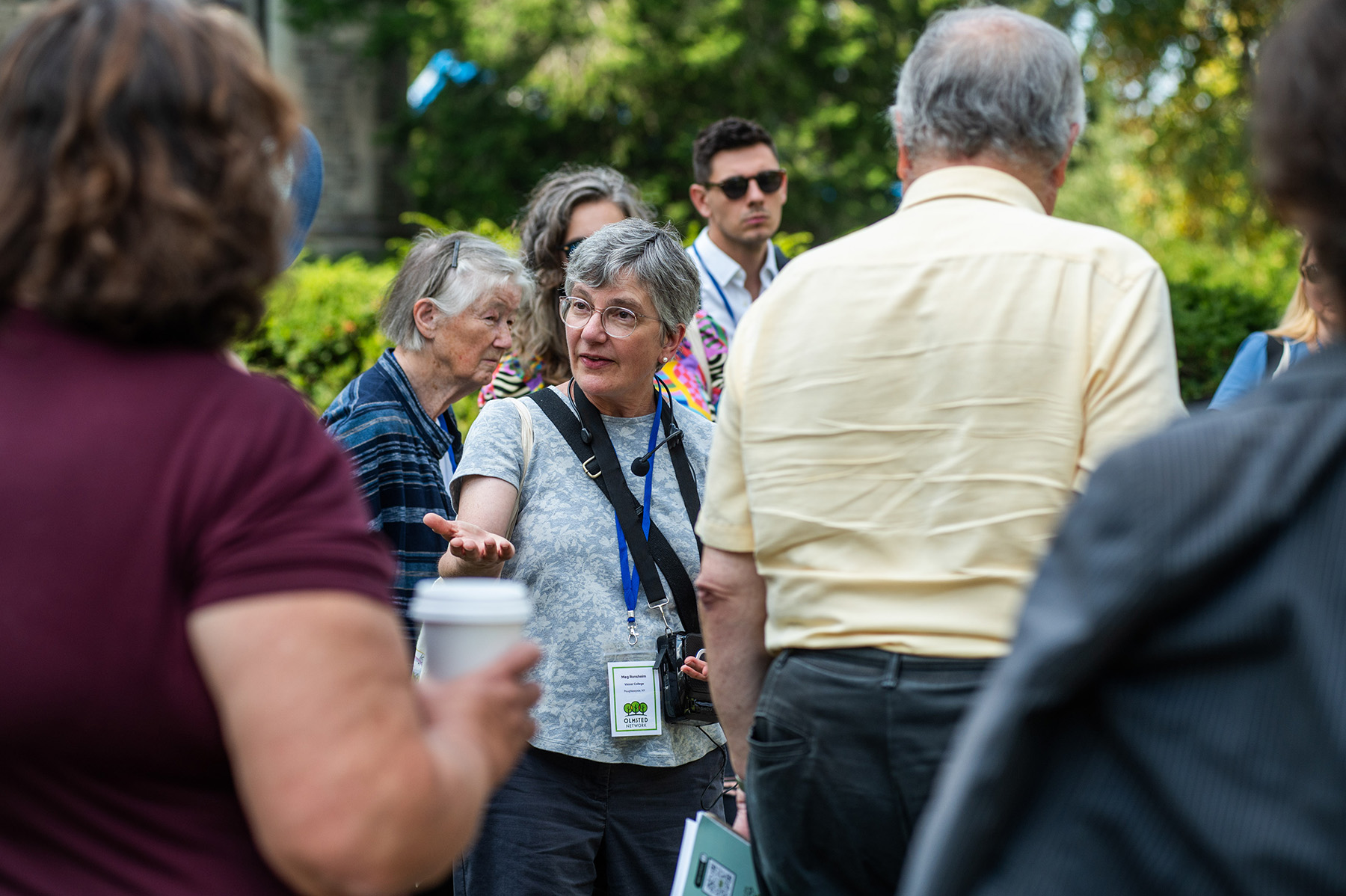Olmsted Conference at Vassar Explores the Benefits of Beautiful Landscapes
Living and working in beautiful natural surroundings—Vassar’s campus, for example—isn’t just aesthetically pleasing. It’s also genuinely beneficial to your mental and physical health. That was one of the major themes of a conference on September 14 and 15— including a full day of activities at Vassar—that paid tribute to the vision of renowned landscape architect Frederick Law Olmsted.

Photo by Kelly Marsh
The event was organized by the Olmsted Network, a nationwide group of historians, design professionals, park managers, and citizen activists dedicated to championing the environmental and design principles embodied by Olmsted’s work. “It is fascinating to consider greenspace through multiple lenses of design, health, and environmental resilience,” said Vassar Professor of Art History Yvonne Elet, who teaches courses on landscape history and who delivered a keynote address.
In panel discussions that followed Elet’s talk, several experts spoke of the work Frederick Law Olmsted and other 19th century landscape design pioneers had done at psychiatric hospitals that were built throughout the northeast. Creating beautiful landscapes on the grounds of these institutions reflected the belief that a well-designed environment would help the patients recover and thrive. “All of these institutions had Olmsted-like visions of the grounds as pleasing, open spaces that would help heal the mind,” said Paris Roselli, President of the Richardson Olmsted Campus, site of a former psychiatric hospital in Buffalo, NY.

Photo by Victoria Vanhuss
That observation was echoed in a second panel discussion moderated by Vassar President Elizabeth H. Bradley, featuring scientists and MDs. “We know nature is good for your health,” said Dr. Howard Frumkin, a physician and epidemiologist whose career has focused on the intersection of health and the environment. “It benefits our senses, increases bone density, and enhances other physical traits.”

Photo by Victoria Vanhuss
Frumkin added that the creation of public parks also plays a key role in addressing mental health. “At a time when we’re experiencing a nationwide epidemic of loneliness, parks that bring people of different backgrounds together makes us more tolerant,” he said.
In her welcoming remarks, President Bradley said that the importance of nature “has been a part of the ethos of the College from its inception, on the grounds and in the curriculum.” Bradley said that commitment to preserving and enhancing the campus environment is embodied by the College’s decision to join the Campus Nature Rx Network, a consortium of more than 70 colleges and universities “that support campus health through inclusive and equitable engagement with nature.” She added that Vassar is making plans to celebrate the 100th anniversary of the creation of the campus arboretum next year.
In her keynote address, Elet took the more than 125 attendees at the conference on a verbal journey spotlighting those at Vassar who had played key roles in designing and creating Vassar’s landscape. Olmsted himself was consulted by College trustees shortly after the first students arrived on campus, although few if any of those discussions led to the ultimate design of the campus, Elet said. But decades later, Olmsted’s nephew and adopted son John Charles Olmsted and members of his firm were involved in plans for various portions of the campus.

Photo by Victoria Vanhuss
Elet pointed out that the Olmsteds are best known for creating parks, but they were also prolific and important campus planners. She displayed a letter by John Charles Olmsted discussing how, in some cases, they designed entire campuses from the start, or advised others on a piecemeal basis, as at Vassar, where three generations of Olmsted partners contributed their creativity and technical skills at different moments.
Elet lauded Botany professor Edith Roberts for championing the importance of making the College’s landscape a showcase for the more than 600 species of plants indigenous to Dutchess County. “The arrival on campus of Edith A. Roberts in 1919 as Professor of Botany was one of the most consequential events in Vassar’s green history,” she said. “Roberts introduced forward-looking ideas about what we now call sustainability to Vassar, and redesigned the curriculum around these new ideas.”
The hiring of noted landscape architect Beatrix Farrand to design the campus arboretum furthered Roberts’s ideas about turning the campus into a living laboratory. “Farrand referred to the ‘educational scheme suggested by the name arboretum,’ considering landscape to be an educational tool, as instructive as the interior classrooms,” Elet said.
Elet then described the contributions of other architects and landscape designers who have advised Vassar in more recent times. They included Eero Saarinen, who developed campus plans in 1954, Diana Balmori, who designed landscape surrounding the Frances Lehman Loeb Art Center in 1990, and Michael Van Valkenburgh, who prepared a campus landscape master plan in 2011.

Photo by Kelly Marsh
“How should we steward a campus landscape that reflects both the history and current identity of the institution?” Elet asked. She concluded her talk by saying that issues of history, health, inclusivity, and environmental resilience will be explored as the College celebrates the arboretum centennial in 2025 and plans for its future.
As the two-day event came to a close, Olmsted Network President and CEO Ann “Dede” Petri thanked Elet and others at Vassar for their commitment to the goals and ideals of the organization. “There is still much work to do to preserve open spaces that promote mental and physical health; in too many cities, our great public spaces are threatened by development and privatization,” Petri said. “Our conference concluded with a call to action: to challenge these trends and to elevate the importance of parks and open space to our physical, mental, and ecological well-being. And all of us were delighted to be introduced to the rich landscape history of the Vassar campus—the Olmsteds, Beatrix Farrand, and more.”